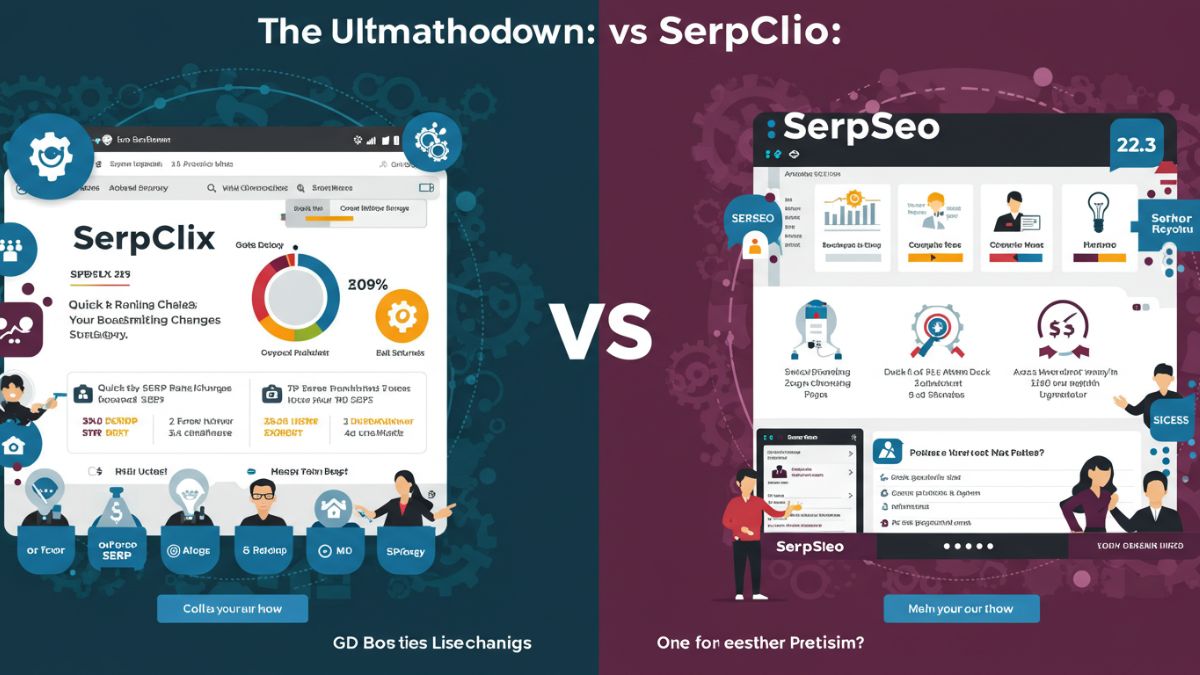TECHNOLOGY
15 Benefits of Using Horizontal Boring Mills

Have you ever been halfway through a project and wished you had a tool that could finish it quickly and precisely? Say hello to the horizontal boring mill, which is going to be your new best buddy in the world of machining. These powerful devices are the unsung heroes of contemporary manufacturing; they are subtly changing the way we manage complicated and big workpieces.
But what exactly is a horizontal boring mill? This enormous device is made to bore holes and carry out numerous other machining tasks with unmatched precision and effectiveness.
A horizontal boring mill’s spindle is positioned horizontally, in contrast to its vertical counterpart’s, which enables it to easily handle large workpieces. This multipurpose tool can handle nearly any task you throw at it, from boring and threading to drilling and milling.
Now, you might be thinking, “Why should I care about a horizontal boring mill?” Well, stick around, because I’m about to dive into the top fifteen benefits of using this powerhouse tool. The advantages of utilizing a horizontal boring mill will astound you and completely change the way you operate, regardless of how big or little your manufacturing business is. Now let’s get started!
1. Precision Galore
First off, let’s talk precision. With a horizontal boring mill, you’re not just getting close; you’re hitting the bullseye every single time. These machines are designed to offer unparalleled accuracy, ensuring that your parts are made to exact specifications. Say goodbye to the frustration of parts not fitting together just right. Whether you’re drilling, milling, or boring, the level of precision is off the charts.
2. Versatility to the Max
Horizontal boring mills are like the Swiss Army knives of the machining world. They can handle a variety of tasks, from drilling holes and cutting threads to milling surfaces and boring large pieces. You can switch between tasks without missing a beat, making it a one-stop-shop for all your machining needs. No more hopping from machine to machine, wasting precious time and energy.
3. Heavy-Duty Performance
Got a big job? No problem! These machines are built tough and can handle large, heavy workpieces with ease. The robust construction means they can operate at high speeds without compromising on stability or accuracy. It’s like having a workhorse that never tires. So, bring on the heavy metal—your horizontal boring mill can take it.
4. Time is Money
In the world of machining, time is money, and horizontal boring mills save you plenty of both. The ability to perform multiple operations in one setup means you spend less time repositioning and recalibrating. Plus, with faster processing speeds, you’re churning out parts at a record pace. More parts in less time equals more money in your pocket. Simple math, right?
5. User-Friendly Interface
Now, don’t let the size and complexity fool you. These machines are surprisingly user-friendly. Modern horizontal boring mills come with intuitive controls and interfaces that make them easy to operate, even for beginners. It’s like riding a bike—once you get the hang of it, you’re good to go. Plus, with automated features, you can set it and forget it, letting the machine do the heavy lifting.
6. Consistency You Can Count On
Consistency is key in manufacturing, and horizontal boring mills deliver. With their advanced technology, these machines ensure that each part is identical to the last. No more worrying about variations that can throw off your entire assembly. You get the same high-quality results every single time, building trust and reliability in your products.
7. Flexibility in Setup
Whether you’re working on a small batch or a large production run, horizontal boring mills offer the flexibility you need. You can easily adjust the machine to accommodate different sizes and types of workpieces. This adaptability makes it a great investment for shops of all sizes, providing the versatility to tackle any job that comes your way.
8. Reduced Labor Costs
Here’s a benefit that’ll make any business owner smile: reduced labor costs. With a horizontal boring mill, you need fewer hands on deck. The machine’s efficiency and automation mean one operator can oversee multiple machines, cutting down on labor expenses. It’s a win-win—you save money, and your team can focus on more critical tasks.
9. Improved Safety
Safety first, folks! Horizontal boring mills are designed with safety in mind. Features like enclosed work areas, automated controls, and emergency stop buttons reduce the risk of accidents. Plus, with fewer manual adjustments needed, there’s less chance for human error. It’s peace of mind knowing that you’re working in a safer environment.
10. Long-Term Durability
These machines are built to last. Investing in a horizontal boring mill is like putting money in the bank. With proper maintenance, they’ll serve you well for years, providing reliable and consistent performance. It’s a long-term investment that pays off in spades, saving you from frequent replacements and downtime.
11. Enhanced Quality Control
Quality control is a breeze with a horizontal boring mill. The precision and consistency mean you can maintain tight tolerances, ensuring that each part meets your high standards. It’s easier to catch and correct errors early in the process, reducing waste and rework. Your customers will notice the difference, too, appreciating the superior quality of your products.
12. Competitive Edge
Last but not least, let’s talk about staying ahead of the game. In today’s competitive market, having the right tools can make all the difference. A horizontal boring mill gives you an edge by increasing your production capacity, improving quality, and reducing costs. You’ll be able to take on more complex and lucrative jobs, positioning your business as a leader in the industry.
13. Cost-Effective Maintenance
Maintaining a horizontal boring mill won’t break the bank. These machines are designed with durability and ease of maintenance in mind. Regular upkeep is straightforward, and parts are readily available. This means less downtime and more time spent doing what you do best—creating top-notch products.
14. High Return on Investment
Let’s talk dollars and cents. The initial cost of a horizontal boring mill might seem steep, but when you factor in the increased production speed, improved quality, and reduced labor costs, it’s clear that this machine is a smart investment. Over time, the return on investment is significant, making it a savvy choice for any serious machining business.
15. Adaptability to Technological Advances
Last but definitely not least, horizontal boring mills are adaptable to technological advances. As new software and machining techniques emerge, these machines can be upgraded and modified to incorporate the latest tech. This means your investment stays relevant and competitive, keeping you at the cutting edge of the industry.
Conclusion
So, there you have it—fifteen solid reasons why a horizontal boring mill is a game-changer. From precision and versatility to cost savings and safety, these machines offer a host of benefits that can transform your operations. If you’re serious about stepping up your machining game, it’s time to consider adding one of these powerhouses to your lineup. You won’t regret it!
TECHNOLOGY
Unlocking ifvod: The Ultimate Guide to Streaming Your Favorite Content

Enter ifvod a revolution in streaming that opens up endless possibilities for viewers everywhere. If you’re tired of traditional viewing limitations and want to experience your favorite movies and shows on your own terms, you’ve come to the right place. This ultimate guide will explore what ifvods is all about, its benefits, popular platforms you can use, and how easy it is to get started with this cutting-edge technology.
Understanding the concept of ifvod
Ifvod, short for Internet Protocol Video on Demand, allows users to stream content directly over the internet. Unlike traditional cable services, ifvod doesn’t rely on physical infrastructure or scheduled broadcasting.
At its core, ifvods offers a vast library of movies and TV shows that you can access anytime. This flexibility empowers viewers to watch what they want when they want—no more rushing home for your favorite series.
The technology behind ifvod utilizes high-speed internet connections to deliver quality video streaming. As long as you have a compatible device and an internet connection, you’re ready to unlock a world of entertainment at your fingertips.
With various platforms available today, each offering unique features and content libraries, it’s easier than ever to customize your viewing experience based on personal preferences. Whether it’s films from around the globe or niche documentaries you’ve always wanted to see, ifvods has something for everyone.
The benefits of streaming content with ifvod
Streaming content with ifvod offers unparalleled flexibility. You can watch your favorite shows anytime, anywhere. This convenience is a game-changer for busy lifestyles.
Another significant advantage is the vast selection of content available. From movies to documentaries, ifvod platforms cater to diverse tastes. There’s something for everyone.
Quality matters too—many ifvods services provide high-definition streaming. Enjoy crisp visuals and clear audio without interruptions or buffering issues.
Additionally, many platforms offer personalized recommendations based on your viewing habits. Discover new favorites effortlessly as algorithms suggest tailored options just for you.
Cost savings are another perk of ifvod streaming compared to traditional cable services. Without hefty monthly fees, viewers can access quality entertainment more affordably.
Most ifvods devices support multiple users simultaneously. Family members or friends can enjoy their own selections at the same time without conflicts over what to watch next.
Popular ifvod platforms and their features
When exploring ifvod platforms, several names stand out for their unique features and streaming capabilities.
One of the most popular is Netflix. It offers a vast library of movies and series, including original content that has won numerous awards. The user-friendly interface makes it easy to find your next binge-worthy show.
Amazon Prime Video is another fantastic option, providing access to not only films but also TV shows and exclusive Amazon Originals. Its integration with other services enhances the viewing experience.
Hulu shines with its focus on current TV episodes from major networks, often available the day after airing. This feature appeals to those who want timely access without waiting for seasons to finish.
Disney+ brings beloved franchises like Marvel and Star Wars into play, catering especially well to family audiences with its extensive catalog of animated classics as well as new releases. Each platform has something special tailored for diverse preferences.
How to set up and use an ifvod device
Setting up your ifvod device is a breeze. Start by connecting it to your TV through an HDMI cable. Ensure both devices are powered on.
Next, connect the device to your Wi-Fi network. Navigate to the settings menu using your remote. Look for “Network” and choose your Wi-Fi from the list. Enter the password when prompted.
Once connected, you’ll want to download streaming apps that interest you. Open the app store on your ifvod device and search for popular platforms like Netflix, Hulu, or custom channels specific to ifvods.
After downloading, sign in with your credentials or create new accounts as needed. You can now browse through various content options available on each platform.
For ease of use, familiarize yourself with voice commands or shortcut buttons on the remote control. This will enhance navigation and make finding shows effortless.
Cost comparison of traditional cable vs. ifvod
When you think about entertainment expenses, traditional cable and ifvod present two distinct financial landscapes. Cable subscriptions often come with hefty fees, hidden charges, and long-term contracts. Monthly bills can soar quickly due to additional services or equipment rentals.
On the other hand, ifvods offers a more flexible pricing model. Many platforms provide subscription options that are significantly lower than typical cable packages. You pay only for what you want to watch without being locked into lengthy agreements.
Additionally, there’s no need for expensive hardware upgrades with ifvod. A smart device or streaming stick is usually all that’s required to access a world of content at an affordable price.
For those who love binge-watching but wish to save money, switching from cable to ifvods might be the logical choice in today’s digital age. The savings add up over time while still enjoying high-quality programming.
Conclusion:
Streaming has transformed how we consume media. Ifvod stands out as a versatile option, catering to diverse tastes and preferences.
The flexibility of ifvod allows viewers to access content on their own terms. Whether it’s binge-watching shows or catching up on the latest movies, options are plentiful.
As technology continues to advance, so will streaming options like ifvod. The future looks promising for those who enjoy quality entertainment without the constraints of traditional cable services.
FAQ’S
What is ifvod?
Ifvod is a streaming technology that allows users to access a wide array of video content over the internet. It provides an alternative to traditional television by enabling viewers to watch their favorite shows and movies on demand.
Is ifvod legal?
Yes, ifvod services are generally legal as long as they provide licensed content. Always check the platform’s compliance with copyright laws in your region.
Do I need special equipment for ifvod?
Most modern smart TVs, gaming consoles, and mobile devices support ifvod platforms. You might also consider dedicated streaming devices like Roku or Amazon Fire Stick for enhanced functionality.
TECHNOLOGY
The Ultimate Showdown: serpclix vs serpseo for Boosting Your SEO Strategy

In the ever-evolving world of digital marketing, SEO remains a pivotal strategy for businesses aiming to enhance their online presence. With search engines constantly changing their algorithms, marketers are on a relentless quest for effective tools that can give them an edge. Enter serpclix vs serpseo two powerful contenders vying for your attention in the realm of SEO enhancement.
Both platforms boast unique features designed to elevate your rankings and drive traffic to your site. But how do they stack up against each other? Which tool is truly worth your investment as you navigate the complexities of search engine optimization? Let’s dive into the details and explore what makes each platform tick, so you can make an informed decision that aligns with your goals.
What is Serpclix and How Does it Work?
Serpclix is a dynamic tool designed specifically for enhancing search engine rankings. It operates on the principle of click-through traffic, simulating real user interactions to improve your website’s visibility.
When users perform specific searches, Serpclix directs them to your site through targeted clicks. This process creates the appearance of organic engagement, which can boost your position in search results over time.
Additionally, it tracks data meticulously. Users receive insights into their campaigns that detail how many clicks were generated and the resulting impact on ranking positions.
The interface is user-friendly, making it easy for anyone—whether an SEO novice or expert—to navigate and utilize effectively. With its focus on real-time performance metrics, Serpclix empowers you to make informed decisions about your strategy moving forward.
The Benefits of Using Serpclix for SEO
Serpclix offers a unique approach to enhancing your SEO strategy. By simulating organic traffic, it helps improve your website’s ranking on search engines. This increase in visibility can lead to more clicks and potential conversions.
One of the standout benefits is its ability to provide real human interactions. Unlike bots, Serpclix uses actual users who engage with your site. This authentic traffic signals credibility to search engines.
Additionally, it allows for targeted campaigns based on specific keywords or locations. You can tailor your efforts according to what matters most for your business goals.
Users often report improvements in their rankings within weeks of implementing Serpclix strategies. It’s a low-risk way to experiment with boosting SEO without heavy upfront investments or long-term commitments.
The platform also provides detailed analytics, allowing you to track progress and optimize further. Understanding user behavior becomes easier when you have access to such valuable data insights.
The Advantages of serpclix vs serpseo for Boosting SEO
Serpclix vs serpseo offers a powerful suite of tools designed to enhance your SEO efforts effectively. One standout feature is its comprehensive keyword tracking, which allows users to monitor rankings in real time. This insight helps you adapt strategies quickly, ensuring you stay ahead of the competition.
Moreover, Serpseo provides detailed analytics that shed light on user behavior and site performance. Understanding what works and what doesn’t can refine your approach significantly.
Another key advantage lies in its user-friendly interface. Even beginners can navigate easily while utilizing advanced features tailored for seasoned pros.
Additionally, Serpseo’s robust reporting capabilities allow for customized reports that cater specifically to your needs. Sharing data with stakeholders becomes seamless and efficient.
Harnessing these advantages can propel your website’s visibility and drive organic traffic like never before. With Serpseo, boosting SEO has never been more strategic or accessible.
Conclusion:
When comparing serpclix vs serpseo, it’s clear that both tools offer unique advantages for enhancing your SEO strategy. Each platform provides distinct features tailored to different needs.
Understanding how these services align with your goals can lead to better decision-making. Testing each option may reveal which one suits your style and requirements best.
Investing time in evaluating these two platforms can result in improved search rankings and increased visibility online. Remember, the right choice depends on specific business objectives and target audience dynamics.
FAQ’S
What is the main difference between Serpclix and Serpseo?
Both tools aim to enhance your SEO strategy, but they operate differently. Serpclix focuses on driving traffic through manual clicks on search results. In contrast, Serpseo emphasizes automated ranking improvements and backlink strategies.
Can I use both Serpclix and Serpseo together?
Yes, many users find that combining both services can yield better overall results for their SEO efforts. Utilizing each tool’s strengths may maximize your online visibility.
Is using these tools safe for my website?
Using either service is generally considered safe if you follow best practices. Both platforms are designed to comply with search engine guidelines, but it’s essential to monitor any changes in functionality or terms of service.
TECHNOLOGY
Unlocking Financial Insights: A Comprehensive Review of coststatus.com

This is where coststatus.com steps in to bring clarity and control to your financial landscape. Whether you’re an individual looking to manage personal expenses or a business aiming for tighter budgetary oversight, this platform promises to streamline the process. From real-time tracking features to insightful analytics, coststatus.com offers tools that empower you with financial insights like never before. Let’s dive deeper into what makes this tool stand out in the world of expense management.
Features and benefits of using coststatus.com
Coststatus.com offers a user-friendly interface designed for seamless navigation. This makes tracking expenses straightforward, even for those new to financial management.
One standout feature is the automated expense categorization. Users can input transactions with ease, and the platform intelligently sorts them into predefined categories. This saves time and reduces manual errors.
Real-time analytics provide insights that help users understand spending patterns at a glance. Visual graphs display trends, enabling informed decision-making about finances.
Additionally, coststatus.com supports budgeting tools that allow users to set limits on different expense categories. Alerts notify when nearing those budgets, promoting disciplined spending habits.
The mobile app ensures you stay connected with your finances on the go. Accessing important information from anywhere enhances convenience in daily life while maintaining control over personal finance decisions.
How coststatus.com analyzes and tracks expenses
coststatus.com makes expense tracking effortless. The platform uses advanced algorithms to categorize spending automatically. This means you don’t have to manually enter each transaction.
Users can easily link their bank accounts and credit cards. Once connected, the tool pulls in transactions in real-time, ensuring that your data is always up-to-date.
The intuitive dashboard breaks down expenses into clear categories like groceries, utilities, and entertainment. Visual charts provide insights at a glance, making it easy to spot trends over time.
Alerts notify users of unusual spending patterns or when they approach budget limits. These features empower individuals to take control of their finances proactively instead of waiting for month-end statements.
With historical data analysis capabilities, coststatus.com helps users make informed decisions about future expenditures based on past behavior.
Comparison with other financial tracking tools
When comparing coststatus.com to other financial tracking tools, a few distinct advantages become clear. Many platforms focus solely on expense tracking, leaving users overwhelmed by complex interfaces. Coststatus.com simplifies this process with its intuitive design.
Unlike some competitors, which may require extensive manual entries or complicated integrations, coststatus.com offers seamless automation features. This means users can effortlessly sync their bank accounts and automatically categorize transactions.
Another notable difference lies in the reporting capabilities. While many tools offer basic analytics, coststatus.com provides detailed insights tailored to individual spending habits. Users gain valuable understanding through visual representations of their financial data.
Customer support also sets it apart from rivals. With responsive assistance and an active user community, help is always within reach when needed most—something that’s not always guaranteed with other services available in the market today.
Tips for maximizing the use of coststatus.com
To get the most out of coststatus.com, start by setting clear financial goals. Knowing what you want to achieve helps tailor your experience.
Regularly input all expenses, no matter how small. This creates a comprehensive view of your spending habits and uncovers hidden costs.
Take advantage of the budgeting tools available on the platform. They can guide you in allocating resources efficiently.
Explore the reporting features frequently. Visual insights into your spending patterns can highlight areas for improvement and help adjust strategies accordingly.
Utilize alerts and reminders to stay on track with payments or budget limits. This keeps you engaged with your finances consistently.
Engage with community forums if available. Sharing experiences can provide fresh perspectives and tips from other users who are also navigating their financial journeys successfully.
Conclusion:
Coststatus.com stands out as a reliable ally for anyone looking to gain control over their finances. Its user-friendly interface and robust features make expense tracking effortless.
By providing clear insights into spending habits, the platform empowers users to make informed financial decisions. Whether you’re managing personal expenses or overseeing a business budget, coststatus.com adapts to your needs.
The ability to analyze and visualize data is particularly powerful. It transforms raw numbers into actionable strategies that can lead to better financial health.
Many users have found significant value in its unique offerings compared to traditional tools. The integration of real-time tracking fosters accountability and encourages smarter spending choices.
FAQ’S
What is coststatus.com?
Coststatus.com is an innovative financial tracking platform designed to help individuals and businesses manage their expenses efficiently. It offers a user-friendly interface that allows users to monitor spending patterns, set budgets, and gain insights into their financial health.
How does coststatus.com analyze expenses?
coststatus.com utilizes advanced algorithms to categorize transactions automatically. Users can input various expense details, which the platform then analyzes for trends. This feature helps identify areas where one might overspend or save more effectively.
Is coststatus.com suitable for both personal and business use?
Yes, coststatus.com caters to both individual users and small businesses. Its versatile features make it easy for anyone looking to track finances—whether managing household budgets or monitoring company expenditures.
-

 GENERAL1 year ago
GENERAL1 year agoDiscovering the Artistic Brilliance of Derpixon: A Deep Dive into their Animation and Illustration
-

 Posts1 year ago
Posts1 year agoSiegel, Cooper & Co.
-

 Lifestyle1 year ago
Lifestyle1 year agoPurenudism.com: Unveiling the Beauty of Naturist Lifestyle
-

 Lifestyle1 year ago
Lifestyle1 year agoBaddieHub: Unleashing Confidence and Style in the Ultimate Gathering Spot for the Baddie Lifestyle
-

 HEALTH1 year ago
HEALTH1 year agoTransformative Health Solutions: Unveiling the Breakthroughs of 10x Health
-

 Entertainment1 year ago
Entertainment1 year agoGeekzilla Podcast: Navigating the World of Pop Culture, Gaming, and Tech
-

 Entertainment1 year ago
Entertainment1 year agoKhatrimaza Unveiled: Exploring Cinematic Marvels and Entertainment Extravaganza
-

 BUSINESS1 year ago
BUSINESS1 year agoUnlocking the Secrets to Jacqueline Tortorice Remarkable Career and Accomplishments
